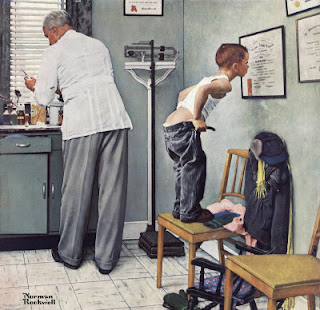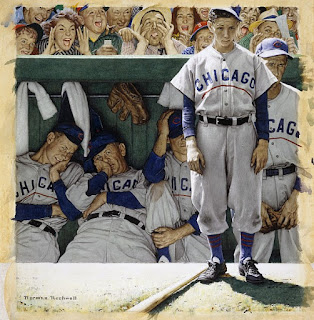He painted the way we were. His warm humor, images of daily events made poignant, the ability to reflect the heart and soul of 20th century America made us pause and ponder: A boy with pants pulled halfway down studying a framed medical degree hung on the wall while the doctor prepares to give him an injection; a little girl beating disgruntled boys in marbles; a young man anticipating the excitement of new discoveries, his father pondering the past. These illustrations stimulate enduring feelings that represent the heart of us all.
Most Millennials and those younger are unfamiliar with Norman Rockwell (1894-1978) while older generations rank him with baseball, apple pie and Chevrolet. He painted nearly 4000 images, including 800 magazine covers—322 for the Saturday Evening Post—and ad campaigns for more than 150 companies.
He painted common places, common values, common feelings that moved beyond the trite and banal encouraging us, bringing us hope for the common man, inspiring us toward a better life. He moved beyond kitsch, beyond the old-fashioned to seal the American way that senoirs find a pleasure to recall.











